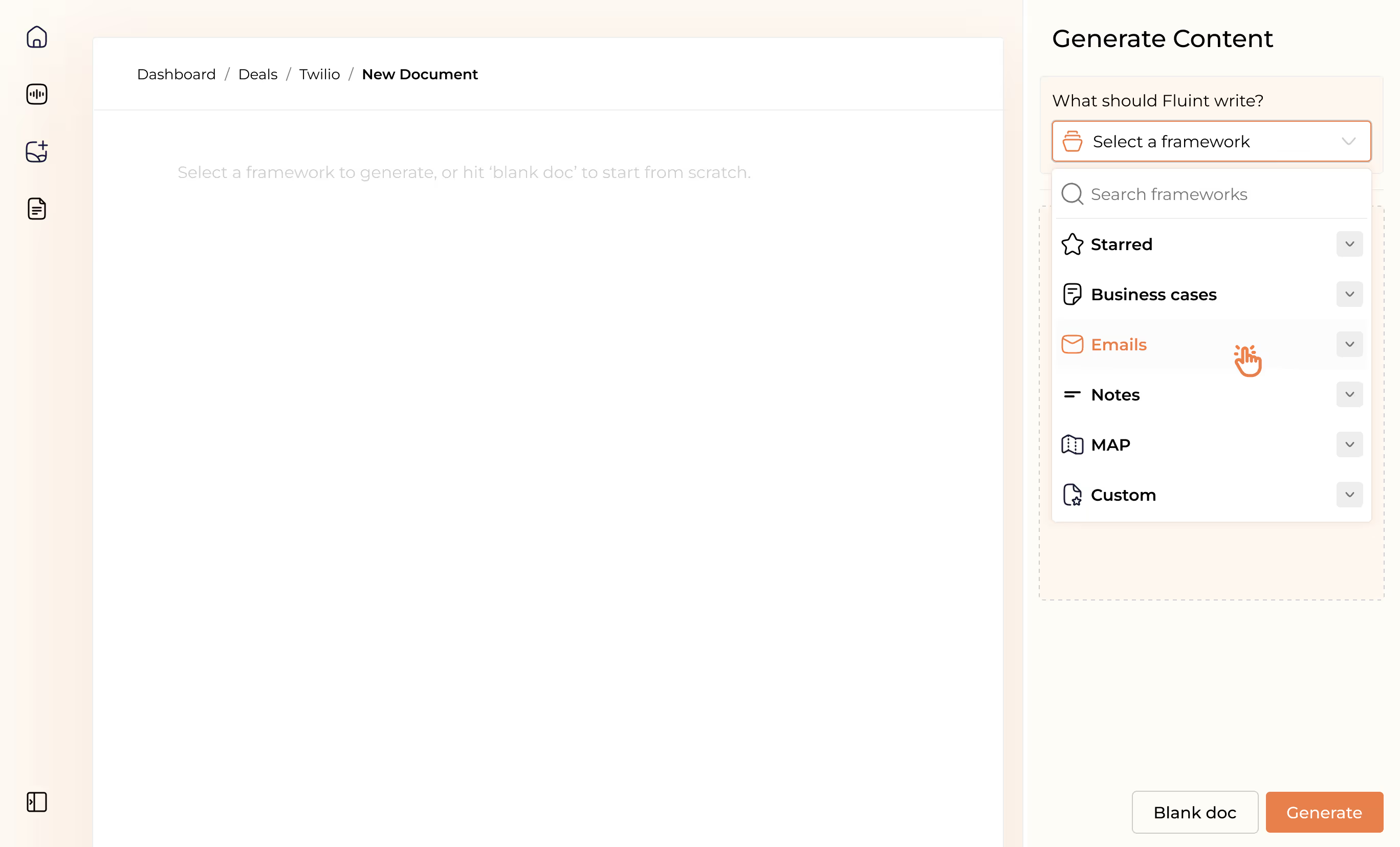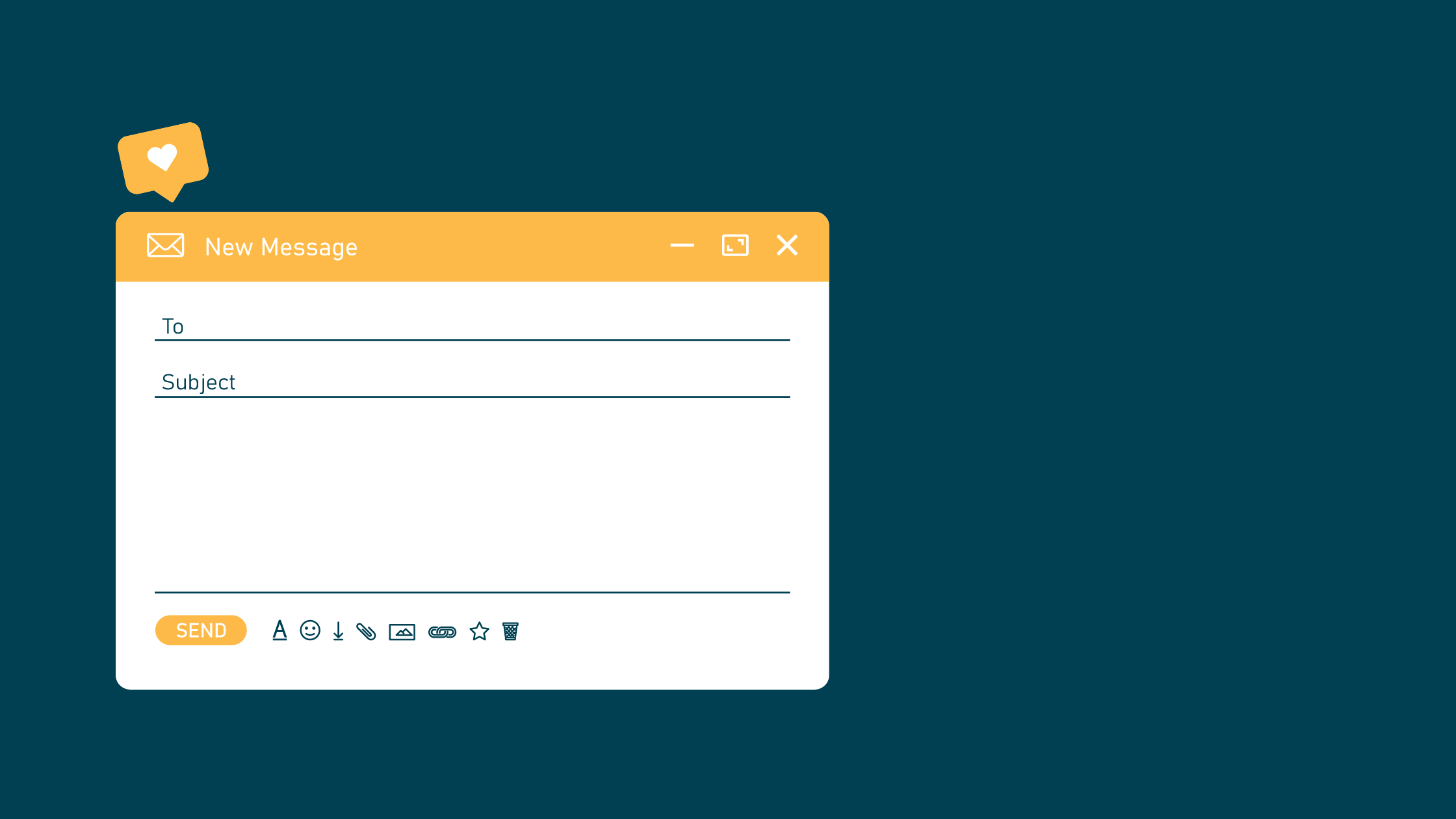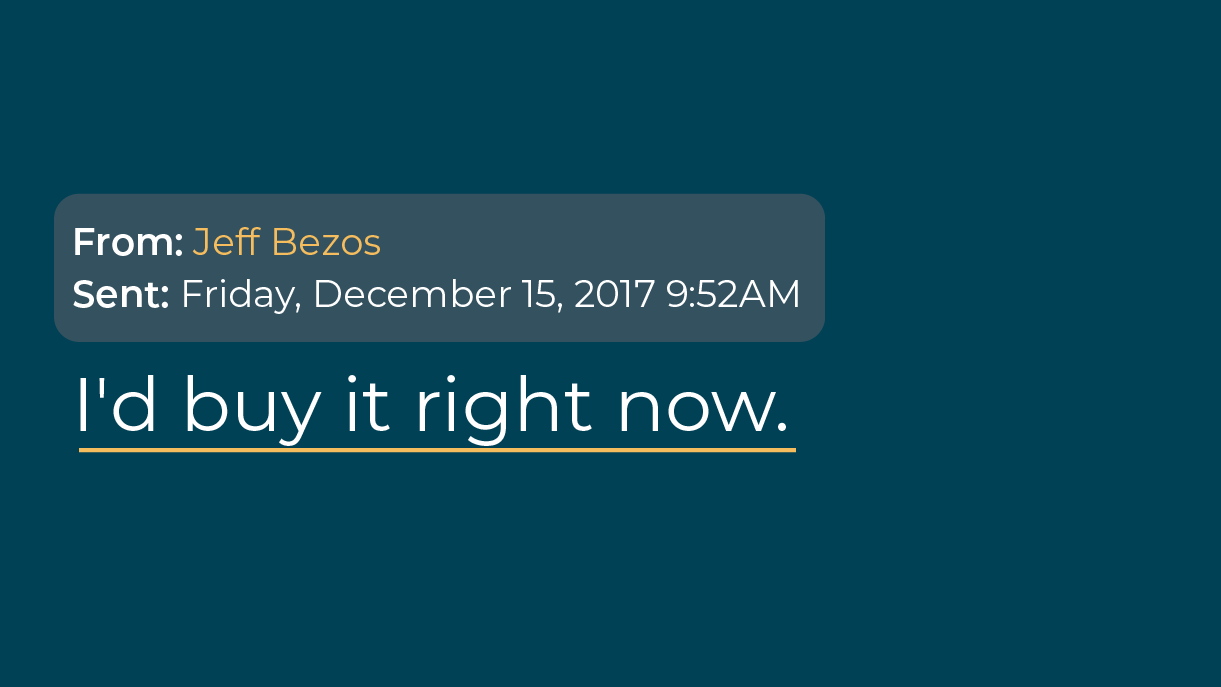Why Buyers Hide Their Objections From You (and What to Do About It)
.png)

Objections are part of every deal. Whether you’re part of resolving them, or not.
They’re like that old arcade game, Whack-a-Mole. Always lurking just below the surface.
Then they pop up all of a sudden and reps “handle” them. They knock them down, fast, lest they derail the deal. But most reps don’t realize handling objections is counterproductive.
Why Buyers Hide Their Objections From You
I’m not sure about you, but I don’t like to feel “handled.” Advised or informed, educated or enlightened, sure. But not handled.
So when a rep thinks they’re removing deal risk by flattening an objection, from the buyer’s perspective, they’re actually:
- Increasing sales resistance.
When we feel someone pushing back on us (even if they’re right), we brace ourselves. We dig our heels in and cling to our original position.
- Teaching buyers to duck n’ cover.
Letting someone else see our FUD (fear, uncertainty, and doubt) is a vulnerable thing. That’s especially true when our FUD is rooted in our reputation, identity, or job security.
So if a buyer feels like they’ve been whacked over the head by a rehearsed and eager response, they learn to duck n’ cover. They retreat and have no interest in exposing another objection again.
- Creating “emotional debt.”
When a rep is dismissive, aggressive, or ambivalent, they’re making a withdrawal from the relationship. Make too many withdrawals, and you go into debt. “Emotional debt,” just like financial debt, compounds. It stacks up faster than you’re able to pay it down.
That’s because objections live in the land of FUD. They make for emotionally-charged moments. Since we’re primed to recall feelings, not facts, these moments are weighed more heavily in the buyer’s mind. They’re what defines the buyer’s memory of their sales experience. This is also why the number of objections you hear directly relates to the trust you’ve built.
Taking these points together, qualified-but-closed-lost deals are often tied back to the times when a seller tried to handle objections.
How to Unpack Objections With Your Buyers
There’s a 3-part framework you can use called Understand-Unpack-Respond. Before digging into that framework, know there’s a difference between objections and questions.
It’s not uncommon that what seems like an objection to a seller, is just a simple question in the buyer’s mind. They’re asking because something you communicated was:
- Missing. You didn’t share all the information your buyer needs. It was incomplete.
- Misunderstood. You did share, but your buyer didn’t follow you.
This will often sound like:
Prospect: Thanks again for the demo. Unfortunately, this doesn’t have what we need.
AE: Thanks again for joining, too. Do you mind me asking, when you mentioned candidate screening was important to you, was I understanding that your goal is to focus your hiring managers’ time on more vetted candidates?
Prospect: Yeah, that’s right.
AE: Got it. Was there something about screening you need, but didn’t see today?
Prospect: Yeah, it didn’t look like there was much screening happening on the demo. It was more a simple yes/no filter. Nothing more advanced than what we already have.
AE: Ah, I’m so sorry I didn’t communicate this. I only had one candidate dimension set, without our “smart filters” on, to keep it simple. Would you like to see how these work?
Now, to the framework.
Step 1: Understand Deeply.
Objection handling involves matching a planned response to a routine prompt. It’s kind of like an “IF” statement in an Excel sheet.
- IF objection relates to pricing, THEN reinforce ROI.
- IF objection relates to implementation, THEN point out NPS scores.
Which leads to sellers making statements. Instead of asking questions. Which leads to a shallow understanding of the true “thing behind the thing” driving the objection.
So step one, “Understand,” starts by listening for what’s not being said.
“Tug on the thread” to unravel the real objection.
When someone first raises an objection, they debate how much to reveal on a spectrum of:
Secrecy < ————— > Transparency
Often, their first objection is just testing the waters. They’ll give you a fraction of the full story, keeping the rest behind the curtain. Their objection will fall here:
Secrecy < X———— > Transparency
When this happens, keep tugging on the thread until you’ve unraveled the full story.
There’s typically a second, third, or fourth order concern behind it. As you dig into those next-order concerns, you’re moving further to the right on this spectrum:
Secrecy < ————X > Transparency
Here’s an example.
- “This seems expensive.”
- “This is more expensive than my $50K approval limit.”
- “I told them I could approve this, and don’t want to admit I can’t.”
- “I’m anxious I’ll never be promoted into a leadership role where I matter.”
In this example:
- “Handling” the objection means talking about the insane ROI you’ll create.
- ”Tugging” on the objection means telling a story about a past deal champion, who was just promoted after leading a company-wide rollout.
By the way, this step starts but doesn’t end here. It continues throughout step two as well.
Step 2: Unpack the Pieces.
Objections often works like a pair of wired headphones that you stuffed into your pocket. They come out as a tangled mess, with different yet connected pieces.
This is where the art of thoughtful discovery continues.
The art of asking thoughtful questions.
Your goal here is to unpack the different pieces to an objection before responding.
For example, you might ask:
“So there’s no scenario where this approach could be helpful?”
"When this topic comes up, typically, it’s because of X, or Y. Is either the case here?"*
“Connective” questions are another effective way to do this. They start by saying:
When you shared… was that related to…?
So how does this compare to when you said...?
This sounds like when you…
Here’s a simplified example of how this sounds. Let’s say you sell to marketing teams:
Prospect: “We’ll be in a tough spot if the inbound leads we’re generating drops, and I don’t see this helping us drive up lead volume.”
AE: “Interesting, is the focus on lead volume related to the sales team hiring you mentioned?”
Prospect: “Right. It’s a part of why we’re focused on more marketing-sourced pipeline.”
AE: “Got it. And your comment about slow rep ramp times, does that play into it?”
Prospect: “Yeah, sales is focused on adding more fully-ramped reps. Which means we need to deliver more leads for them, to help everyone hit our team goals.”
AE: “Is lead quality not part of the picture then?”
Prospect: “Well, kind of. It affects the lead-to-opportunity conversion.”
AE: “Which is part of the marketing-sourced pipeline goal you were just talking about?”
Prospect: “Exactly. So if volume drops, but we have better conversions, we could probably still hit our pipeline goal.”
AE: “Would the sales team be okay with that approach?”
Prospect: “Actually, they’d probably prefer it. Easier to handle less but higher-quality leads while new reps are ramping up. So I guess our goal is really about lead quality.”
Now, is every convo this seamless? No. Definitely not.
But you can see the contrast to an immediate “handle” like:
“Instead of focusing on lead volume, we’ll 3X your marketing funnel with our AI-enabled prospecter, which matches your ideal customer profile to second-party data sources to boost conversion rates.”
Step 3: Respond Gracefully.
Now that you understand “the thing behind the thing,” and unpacked all the objection’s pieces, you’re ready to respond. Here are three methods you can use, depending on the conversation.
Back up one level to call out assumptions.
Most objections come with a set of built-in assumptions. It may be that your buyer hasn’t stepped back to unpack or question the higher-level beliefs they’re taking as a given.
You typically see this in product-focused objections where an approach has already been decided, but not communicated or questioned.
This sounds like:
Prospect: Thanks, these sequences and campaigns look good, but I didn’t realize this doesn’t have a built-in dialer, so I don’t think this is going to be a fit.
AE: Sounds like you’re focused on an all-in-one solution then?
Prospect: That’s right.
AE: And you mentioned most new meetings your team is booking are from cold calls, right?
Prospect: Yes, also right.
AE: Gotcha. Something to consider, then: all-in-one solutions sacrifice deeper functionality for ease, and a wider range of features.
So while you work to add in email and social campaigns, have you looked at what functionality your sellers rely on today, but you’ll have to sacrifice with an all-in-one?
Prospect: Not yet, I guess I haven’t looked into the tradeoffs.
AE: Well if you’d be open to exploring using two point solutions, then I’ll show you how other dialers integrate with us. That way, your sellers can keep everything they need for calling.
The point here: an all-in-one approach is an assumption. It’s the foundation to the objection. Instead of going deep into a feature comparison, back up a level and speak to the premise.
Introduce more complexity to the conversation.
This is a bit of a weird one because, typically, simplicity is a gift. Complexity is bad.
But addressing an objection can involve pointing out the nuance that exists in a decision. To create a more open mind, and disrupt unhealthy levels of over-confidence.
Adam Grant puts it this way in his book (which I highly recommend) Think Again:
A dose of complexity can disrupt overconfidence cycles and spur rethinking cycles. It gives us more humility about our knowledge and more doubts about our opinions, and it can make us curious enough to discover information we were lacking.
Here’s how this will sound:
“Got it. Well, if you’re looking to maximize X… then you’ll want to focus on… but if your goal is Y… then actually, you’ll need to…”
This approach also re-introduces a sense of choice and control to the buyer.
You’re allowing them to opt for the path they believe is right. A second, related quote from Think Again talks about the fact that all persuasion is self-persuasion:
“I gave them reason to think about their direction in life, and they thought about it, and thought, ‘I need a better path, and this is the way to go.’”
Step back to enable a separate, internal conversation.
Finally, when you’re working with a large buying committee, the group will tend to funnel their objections through one person. It’s common for that person to proactively raise an objection they think the group will bring up, too:
“I know Casey’s going to be nervous about X, so let find out more.”
In this case, shift your posture from selling to your buyer, to selling with them. Show them how to communicate with the committee when you’re not around.
This is critical, because skeptics are powerful. They can tip the decision scales quickly, and their concerns carry more weight than the benefits your champions are advocating for.
Plus, it’s easier for skeptics to withhold objections during sales conversations. They’re most likely to share them during an internal conversation that’s happening about you, without you.
Here’s an example of how this will sound:
Buyer: It seems like the implementation process is going to be pretty distracting.
AE: From our last conversation, it sounded like Casey, not you, would be running point during the setup process. Is that still the case?
Buyer: Right, I’m not going to be involved very much during the first few weeks.
AE: Gotcha. I can see how, from Casey’s perspective, this will feel like a distraction, while you’re feeling excited for everything that comes after. If I was part of your next conversation Casey, here’s what I’d want her to know.
…..
By the way, the word “distraction” makes me think Casey may not fully see the link between this project, and the priority Juan [Casey’s boss] already set. So I’d communicate…
Here’s a visual of what this looks like:

When you use the Understand-Unpack-Respond framework, tone and posture are key.
Here’s one last illustration on why.
There’s a bunch of prairie dogs that live on a trail by my house. When I’m running, they duck into their holes. But if I slow down and walk calmly, they come out. They realize I’m not a threat.
Effective sellers create an equally calm presence, to bring objections into the daylight. They don’t let their own fear of losing a deal lead to quickly eliminating the "threat" of an objection.
FAQ's on:
Why stop now?
You’re on a roll. Keep reading related write-up’s:
Draft with one click, go from DIY, to done-with-you AI
Get an executive-ready business case in seconds, built with your buyer's words and our AI.

Meet the sellers simplifying complex deals
Loved by top performers from 500+ companies with over $250M in closed-won revenue, across 19,900 deals managed with Fluint

Now getting more call transcripts into the tool so I can do more of that 1-click goodness.



The buying team literally skipped entire steps in the decision process after seeing our champion lay out the value for them.


Which is what Fluint lets me do: enable my champions, by making it easy for them to sell what matters to them and impacts their role.





.png)


